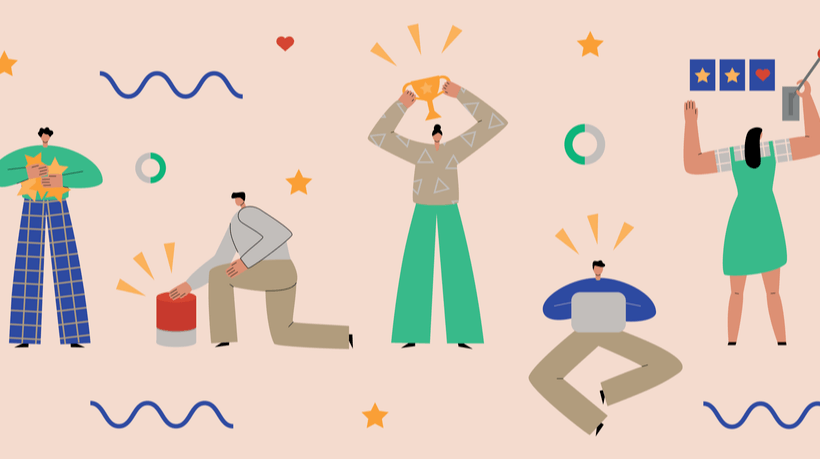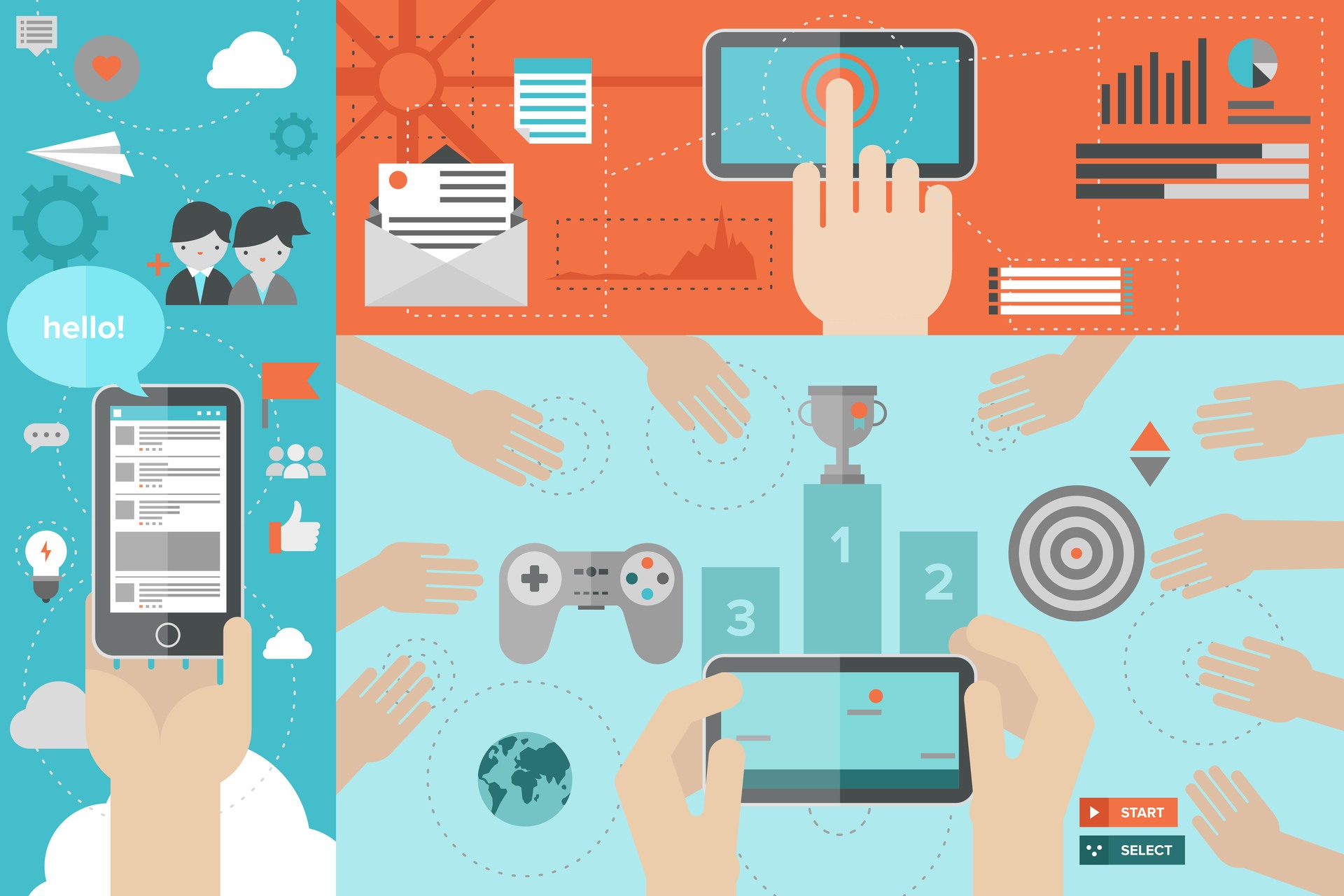Using Gamification In eLearning
Ever wondered what made Candy Crush so famous? Apart from the intuitive design, exciting gameplay, and satisfying animations, King introduced several elements of gamification that made Candy Crush so addictive. For example, the first few game levels are simple, with animated tutorials to get you started. However, as you progress, you are presented with new features that keep you motivated to clear the existing challenge and move to the next. Even the leaderboard is gamified. It places you at the bottom of the scoreboard at the end of every level and then shows you rising, displacing the person with the next lowest score, giving you an immediate sense of victory.
The same concept can also be applied in non-game environments to increase engagement. For example, an eLearning app can give students badges to reward them for studying every day for seven days in a row. It may also place the students on a leaderboard and incentivize regular learning. This application of game elements in a non-game activity or environment is also known as gamification.
Gamification In eLearning
When you participate in any robust physical or mental activity, the body releases endorphins that naturally alleviate stress and improve learning. Through gamification, a similar effect can be achieved in eLearning by challenging learners or motivating them to achieve a particular award, perhaps as simple as unlocking a new badge or ribbon.
The benefits of gamification in learning are proven by science. Research has found that gamification of eLearning motivates users [1] to access and use the online learning material more frequently. It has also been indicated that well-designed game environments provide continuous opportunities for player improvement, which is useful for both school-based learning and employee training.
The benefits of gamification are rooted in human psychology. By pitching learners against themselves or using stories with learners embedded in the plot, gamification makes learning much more interactive and exciting. Elements of competitiveness and associated rewards make the whole experience even more satisfying and rewarding.
In case you are wondering why you should gamify your eLearning content, the findings of the 2019 Gamification at Work survey [2] will give you good reason to do so. According to the study:
- A majority of employees said that gamification makes them feel more productive and happier.
- 89% of employees said they feel motivated to complete a task when it is gamified.
- 83% of employees who received gamified training felt motivated, while 61% of those who received non-gamified training reported feeling unproductive and bored.
- 33% of employees desired more game-like features in their training software.
Top Ideas For Implementing Gamification In eLearning For Instant Results
Gamification in eLearning can be quite useful. A study conducted by the University of Colorado found that those who participated in gamified eLearning experiences scored higher in skill-based knowledge assessments and showed a higher retention rate.
However, not all gamification elements lead to the same results. According to the 2019 Gamification at Work Survey cited in the last section, rewards are the most motivating of gamification elements, followed by badges, points, leaderboards, and levels. However, if you are looking for something even more immersive, we are already seeing gamification examples using AR/VR and AI. Here’s a round-up of some exciting gamification ideas you may consider implementing in your eLearning programs in 2021.
1. Chatbots In eLearning
A chatbot interacts with users on specific topics in a natural, conversational way, using text or voice. Powered by Machine Learning and natural language processing capabilities, these bots have proven useful in many areas like marketing, customer service, and even education and training.
An interesting example we came across is of a Quizbot developed at Stanford University to make learning more engaging and personalized.
The Quizbot, personified as Frosty the penguin, gamifies the learning process in the form of a fun quiz. Depending on the student’s interest and subjects, Frosty will ask various questions and congratulate the student for every correct answer. A study was conducted to check the system’s efficacy, and it was found that students provided with Quizbot spent 2.6 times longer studying than students [3] provided with a flashcard app. Students using Quizbot also recalled correct answers more frequently.
Corporates may emulate a similar model to build customized Quizbots for training in areas like compliance to maximize learning outcomes in a fun way.
2. Using An Avatar
An avatar can be defined as an online representation of self in the virtual world. Unsurprisingly, avatars are not only fun but also useful for gamifying training and eLearning. For example, avatars enable users to engage in imaginary scenarios and carry out tasks that might be difficult to emulate in the real world due to cost or other constraints. Furthermore, virtual worlds can grow and adapt to meet user needs, making the training process highly personalized. Such a system also enables employees to learn at different levels, at their own pace, with room for making mistakes and learning from them.
One idea is to use avatars in stories to make a course lively. For example, you can have a system for training HR managers that revolves around an avatar, say, Joe—the new HR manager who must tackle different situations in his new role. Users can take part in this scenario-based training by making decisions for Joe to help him complete the process while getting trained along the way.
3. Immersive Gamification With AR/VR Technology
Gamified eLearning courses can make learning more engaging and fun with tangible rewards and badges. With AR and VR technologies, you can make the eLearning landscape much more immersive by allowing users to interact with various elements physically. A glimpse of incorporating this microlearning example can be seen in the game Pokémon Go that revolutionized the world of gaming by introducing AR technology. Similarly, you can use AR technology in your training programs to explain complex machinery and how to fix it or create simulations for emergencies to train employees to react judiciously in such situations.
4. Gamification For Assessments
The use of gamification for assessments is not a new concept. As far back as 2004, the cosmetics giant L’Oréal started using serious gamification tools for recruiting candidates. Even though we’re now in a remote world and using a webinar platform for assessments is the norm in most companies, gamification has become more relevant than ever.
“Reveal the Game [4]” was developed by the company to help applicants challenge themselves in various job-related themes using real-world scenarios. By deploying such gamification tools, L’Oréal can screen applicants’ analytical skills, which isn’t always possible through traditional hiring means.
5. Add An Educational Twist To Familiar Games
A hurdle to learning is getting people to engage, which is why gaming is an attractive solution to reach and educate more people. However, users still have to learn to play a game.
To lower the barriers even further, you can use games that people are already familiar with. Education entrepreneur veteran Neal Taparia, for example, launched Solitaired to take classic games and tie them to education and brain training. He explains, “In one instance, we created a solitaire game where we put pictures and fun facts of each employee on the cards. We found that this dramatically improved onboarding engagement and emotional connection to the team.”
By taking familiar games and tying them to educational goals, you can improve reach and efficacy while having fun.
Parting Thoughts
Gamification in eLearning offers a simple solution to keep students and employees motivated and learn in a fun and engaging manner. However, as is the case with everything else, you cannot gamify every aspect of your training content, and it must be approached with a strategy and an end-goal in mind. If you plan to revamp your training program, it is a good idea to start with employee feedback to identify problem areas and then determine the best way to gamify your content for a better learning outcome.
References:
[1] Gamification in e-learning: The Effect on Student Performance
[2] The 2019 Gamification at Work Survey
[3] Stanford's 'QuizBot' helps students retain 25 percent more information
[4] L’Oreal uses Serious Games for Employee Recruitment









